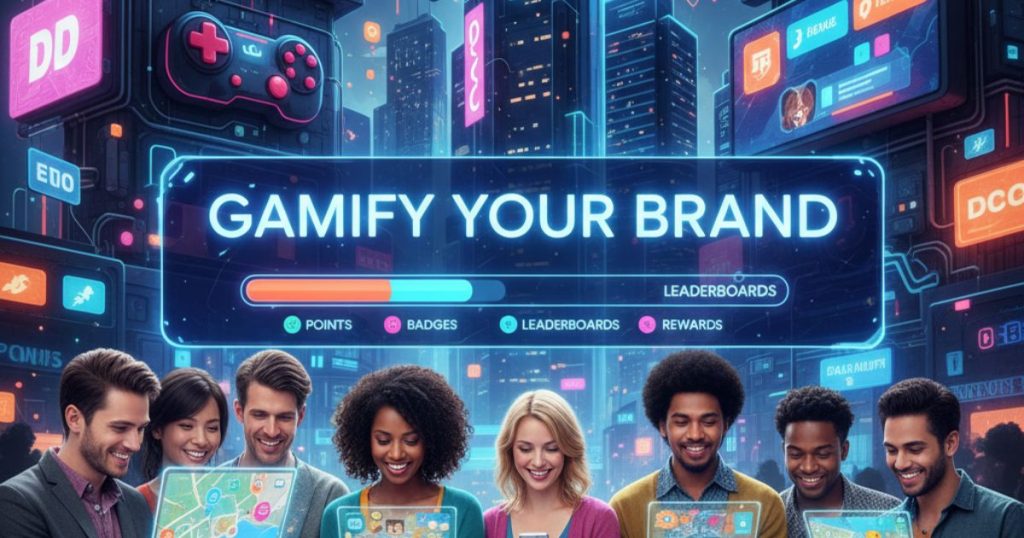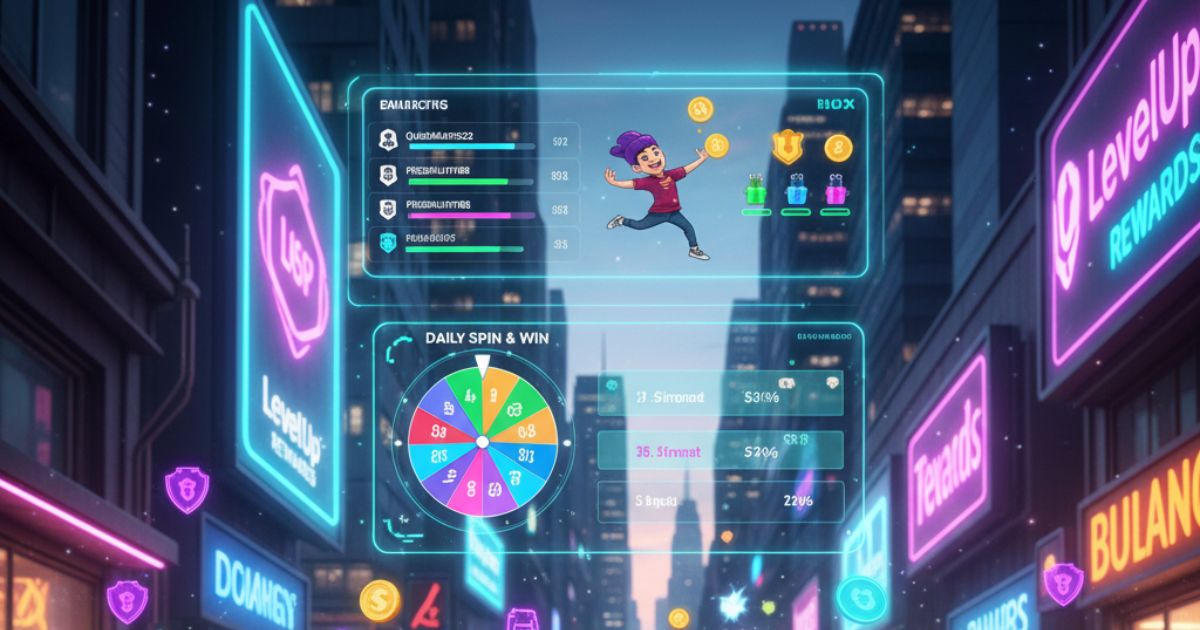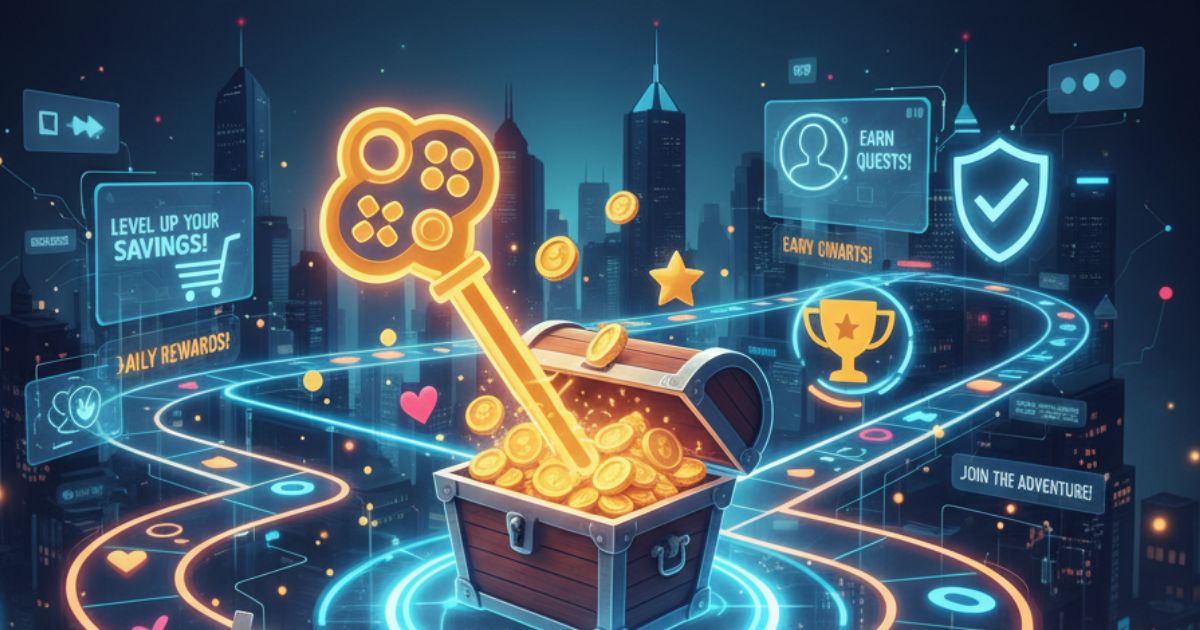Gamification in Marketing: How to Drive Customer Engagement and Loyalty Through Play

What Is Gamification in Marketing?
Gamification applies elements commonly found in games—such as points, badges, levels, and challenges—to non-game contexts. Marketing encourages users to participate in brand activities by tapping into their intrinsic and extrinsic motivations. While game mechanics make interactions fun, the real goal is driving desired behaviors: signing up, sharing content, making purchases, or referring friends. When done right, gamification transforms passive audiences into active participants, boosting engagement rates and deepening emotional connections with your brand.
Why Gamification Works: The Psychology Behind Play

Human brains are wired to seek rewards and recognize achievements. Game mechanics trigger dopamine releases when users earn points or unlock badges, reinforcing behavior. Additionally, competition, progress tracking, and social recognition fuel motivation. By leveraging these psychological triggers, marketers can guide audiences through micro-commitments—small actions that build momentum toward larger goals. This incremental approach feels less intimidating than a big ask, leading to higher conversion rates and sustained engagement.
Seven Strategies for Effective Gamification in Marketing
Implementing gamification requires more than slapping on a leaderboard. You need a clear plan that aligns game mechanics with business objectives and user expectations. Here are seven strategies to maximize your gamified campaigns:
1. Define Clear Goals and KPIs
Start by identifying the specific behaviors you want to drive—newsletter sign-ups, product trials, social shares, or repeat purchases. Set measurable KPIs such as completion rate, time on site, or average order value. With defined goals, you can choose game elements that directly support those outcomes and track progress to optimize your approach over time.
2. Know Your Audience and Their Motivations
Effective gamification resonates with your target demographic. Conduct user research or surveys to understand their preferences—do they prefer competition, collaboration, or personalized challenges? Tailor rewards and difficulty levels accordingly. For instance, sales professionals may respond to public leaderboards, while creative audiences might value badges showcasing skill mastery.
3. Choose the Right Game Mechanics
Familiar mechanics include points, badges, levels, challenges, progress bars, and leaderboards. But more advanced tactics—such as narrative quests, role-playing, or scavenger hunts—can deliver richer experiences. Match mechanics to your goals: use points and badges for quick wins, levels for long-term engagement, and narrative quests to educate customers about features or benefits.
4. Integrate Seamlessly with Marketing Channels
Your gamified elements should live where your audience already engages with your brand—website, mobile app, email campaigns, or social media. If you launch a point system on your website, remind users via email about their balance. Embed mini-games in social posts to spark shares. Seamless integration ensures you meet customers in their preferred channels without friction.
5. Design Compelling Reward Systems
Rewards can be tangible (discounts, free samples) or intangible (badges, VIP status, exclusive content). Mix immediate rewards for low-effort tasks with long-term incentives for sustained activity. Ensure rewards align with your brand value and audience desires—an industry report or masterclass might appeal more to a B2B audience than a generic coupon.
6. Personalize the Experience
Leverage data to tailor challenges and rewards. Segment users by behavior, preferences, or demographics and present them with relevant quests. Use dynamic progress bars that update in real-time and send personalized nudges—”You’re 20 points away from a gift!”—to rekindle interest and drive completion.
7. Track, Analyze, and Optimize
Continuously monitor engagement metrics such as completion rates, time spent, sharing frequency, and conversions. A/B test different mechanics, reward thresholds, and messaging. Use customer feedback to refine difficulty levels and reward appeal. Over time, you’ll identify the most effective combinations for your unique audience and objectives.
For Further Reading, explore Why Is Brand Extension a Popular Marketing Strategy?
Real-World Examples of Gamification Done Right
Several brands have leveraged gamification to impressive effect. Starbucks’ Rewards program uses stars and levels to drive repeat purchases. Nike’s Run Club app offers virtual badges and social challenges to motivate athletes. Duolingo turns language learning into a game with streaks, XP points, and leaderboards—resulting in millions of daily active users. These success stories underscore the potential of thoughtfully designed gamification to foster loyalty and growth.
Common Challenges and Best Practices

While gamification is promising, pitfalls exist. Poorly defined goals can lead to features that don’t move the needle. Overly complicated mechanics may frustrate users, and irrelevant rewards can devalue the experience. To avoid these traps, start small with a pilot, gather user feedback, and iterate. Focus on simplicity, clarity, and genuine customer value—keep the game easy to understand and rewards meaningful.
Conclusion
Gamification in marketing offers a dynamic way to engage customers, drive key behaviors, and build long-term loyalty. By defining clear objectives, understanding your audience, selecting appropriate game mechanics, and continuously optimizing based on data, you can transform mundane tasks into joyful experiences. Whether you’re launching a points system, crafting narrative quests, or integrating mini-games across channels, a strategic approach to gamification can deliver substantial ROI and set your brand apart in a crowded landscape.
Ready to level up your marketing? Start mapping out your first gamification campaign today and watch engagement—and loyalty—soar.





